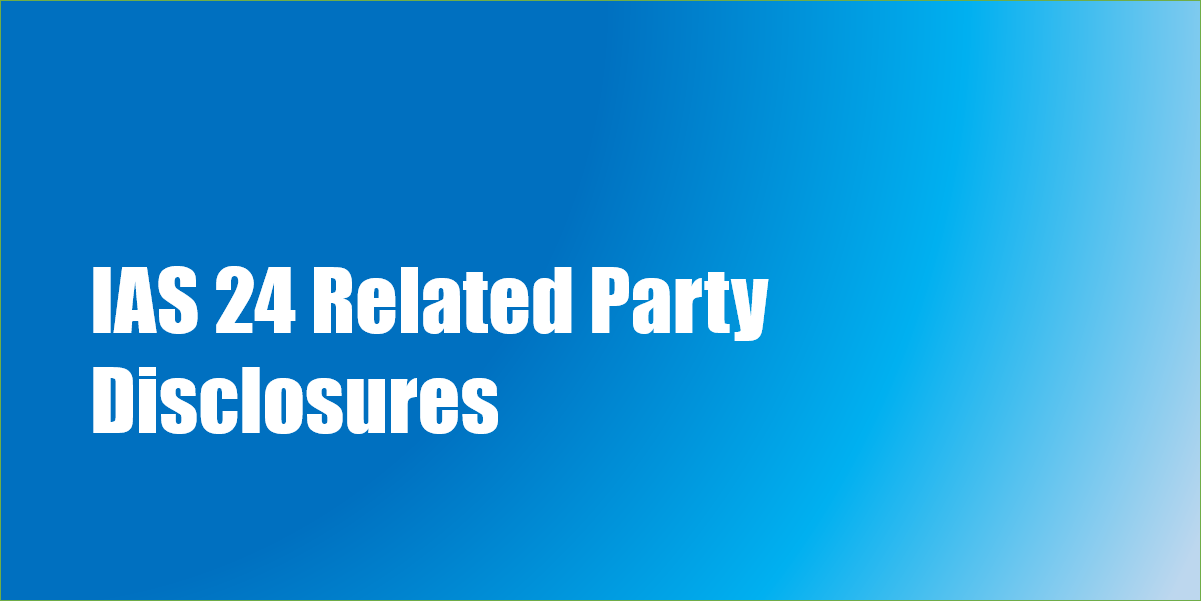IAS Standards
IAS 2 Inventories
IAS 7 Statements of cash flows
IAS 7 Statement of cash flows – Revisited
IAS 8 Accounting policies, changes in accounting estimates, and errors
IAS 10 Events after the reporting period
IAS 16 Property, plant and equipment
IAS 20 Accounting for government grants and disclosure of government assistance
IAS 21 The effects of changes in foreign exchange rates
IAS 24 Related party disclosures
IAS 27 Consolidated and separate financial statements
IAS 28 Investments in associates and joint ventures
IAS 32 Financial instruments: presentation
IAS 33 Earnings per share – Revisited
IAS 37 Provisions, contingent liabilities and contingent assets
IFRS Standards
IFRS 5 Non-current assets held for sale and discontinued operations
IFRS 7 Financial instruments: disclosures
IFRS 10 Consolidated financial statements
IFRS 12 Disclosure of interests in other entities
IFRS 13 Fair value measurement
IFRS 15 Revenues from contracts with customers
IAS 17 VS IFRS 16 Lease – Differences
IAS 24 full text Overview
The objective of IAS 24 Related Party Disclosures is to ensure that an entity’s financial statement contain sufficient disclosures, that the entity’s financial position or profit/loss may have been affected by;
- Existence of related parties;
- Transactions and outstanding balance with related parties.
So, what are Related party relationships and Related party transactions?
Related Party Relationship (IAS 24 Related Party Definition)
A related party is person or entity that is related to the entity preparing its financial statements (the reporting entity),
Person (as Related party)
A person or a close member of that person’s family is related to a reporting entity, if that person;
- Has control or Joint control over the reporting entity.
- Has significant influence over the reporting entity; or
- Is a member of the key management personnel of the reporting entity or of a parent of the reporting entity.
Entity (as Related party)
An entity is related to a reporting entity if any of the following conditions applies:
- The entity and the reporting entity are members of the same group.
- One entity is an associate or Joint venture of the other entity (or an associate or joint venture of a member of a group of which the other entity is a member)
- Both entities are joint ventires of the same 3rd
- One entity is a joint venture of a third and the other entity is an associate of the 3rd
- The entity is a post-employment benefit plan for the benefit of employees of either;
- The reporting entity; or
- An entity related to the Reporting entity.
- If the reporting entity is itself such a plan, the sponsoring employees are also related the Reporting entity.
- The entity is controlled or jointly controlled by a Person
- A person (who has control or Joint control over the reporting entity), has significant influence over the entity or is a member of the key management personnel of the entity or Parent of the entity.
- The entity or any member of a group of which it is a part provides key management personnel services to Reporting entity or parent of Reporting entity.
*In considering each possible related party relationship, the entity must look to the substance of the arrangement, and not merely its legal form.
*TWO entities have same individual on their board of directors would not meet condition for a related party, a related party relationship would nevertheless exist if influence can be shown.
Related party Exemptions
Examples of entities that are usually NOT related parties are: (the substance of the relationship should always be considered in each case)
- Two venturers that simply share joint control over a joint venture
- Providers of finance
- Trade unions
- Public utilities
- Government departments and agencies
- Customers, suppliers, franchisors, distributors or other agents with whom the entity transacts a significant volume of business.
Related Party Transactions
A related party transaction is a transfer of resources, services or obligations between a reporting entity and a related party, regardless of whether a price is charged.
Examples of Related party Transactions (IAS 24 illustrative examples)
Following are some of the examples of Related party transactions:
- Purchases and sales of goods
- Purchases or sales of Property and other assets
- Rendering or receiving of services
- Leases
- Transfer of Research and Development cost
- Finance arrangements (Loans or contribution to entity)
- Provision of guarantees
- Settlement of liabilities on behalf of the entity or by the entity on behalf of another party.
IAS 24 Disclosure Requirements
IAS 24 Related Party Disclosures requires the following disclosures:
- Name if the parent company or the ultimate parent (if any)
- The nature of related party relationship
- The amount of transaction (if any)
- In respect of outstanding balances;
- The amount
- Their terms and conditions
- Any guarantees given or received
- Any provision for doubtful/Irrecoverable debts.
- The expense recognized in the period in respect of irrecoverable debts due from related parties.
The above disclosures should be given separately for:
- The parent
- Entities with joint control or significant influence over entity
- Subsidiaries
- Associates
- Joint ventures in which the entity is a venturer
- Key management personnel of entity or parent
- Other related parties.
Additional Disclosures
Compensation to key management personnel in total, and for each of the following categories;
- Short term employee benefits
- Post-employment benefits
- Other long-term benefits
- Termination benefits
- Share-based payments
IAS 24 PDF
The IAS 24 Related Party summary with disclosures pdf is available to download. Click here to Download the IAS 24 summary pdf

Leave a Reply
You must be logged in to post a comment.